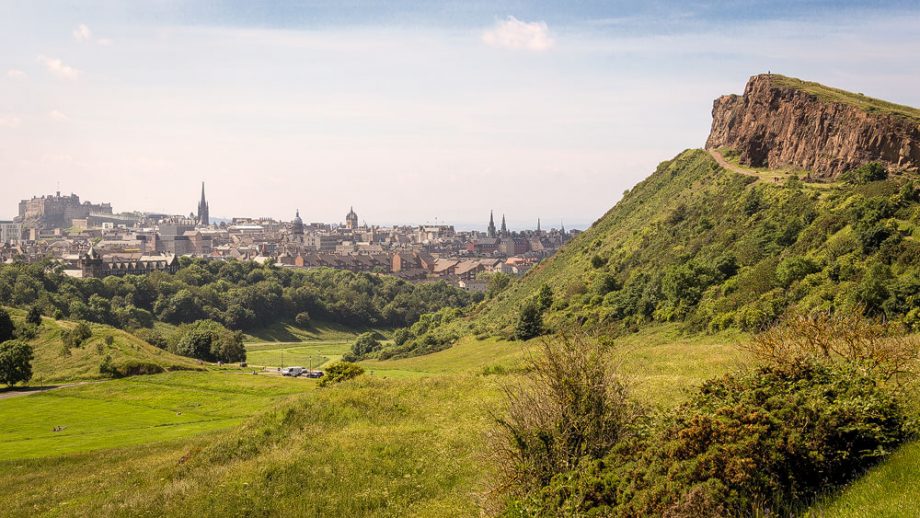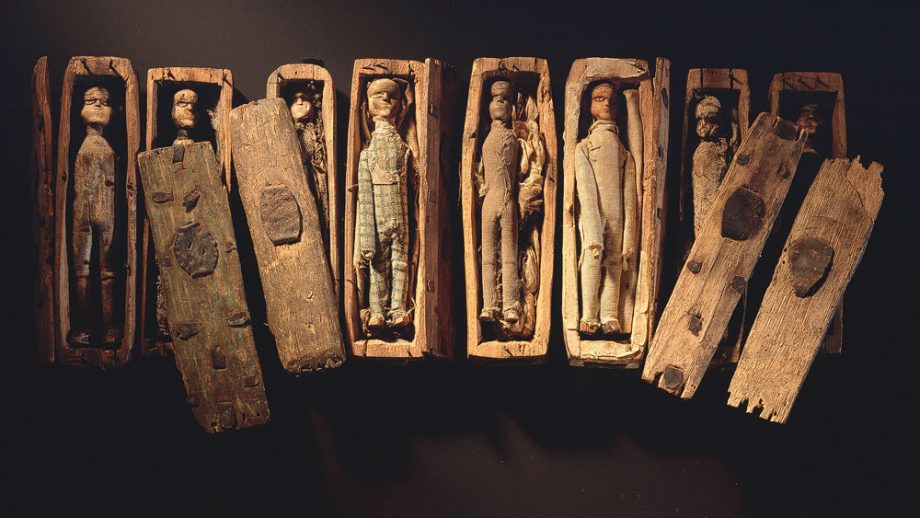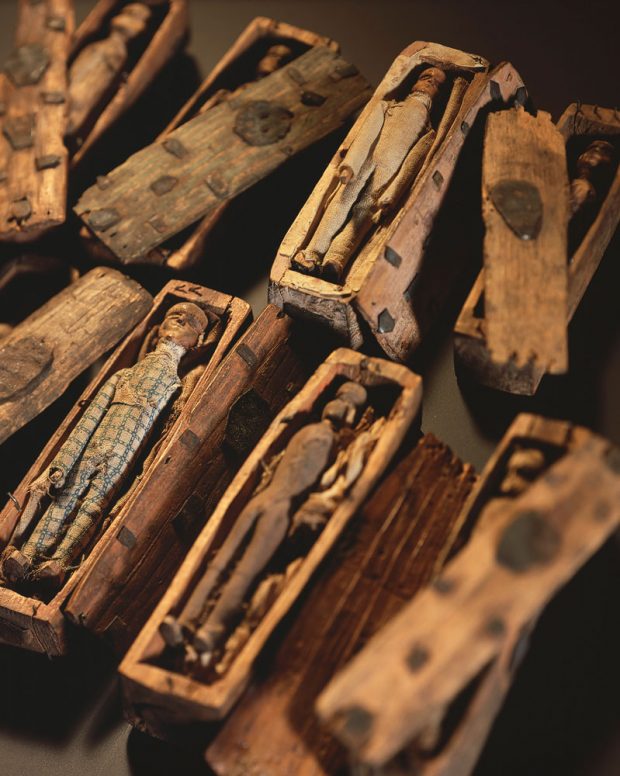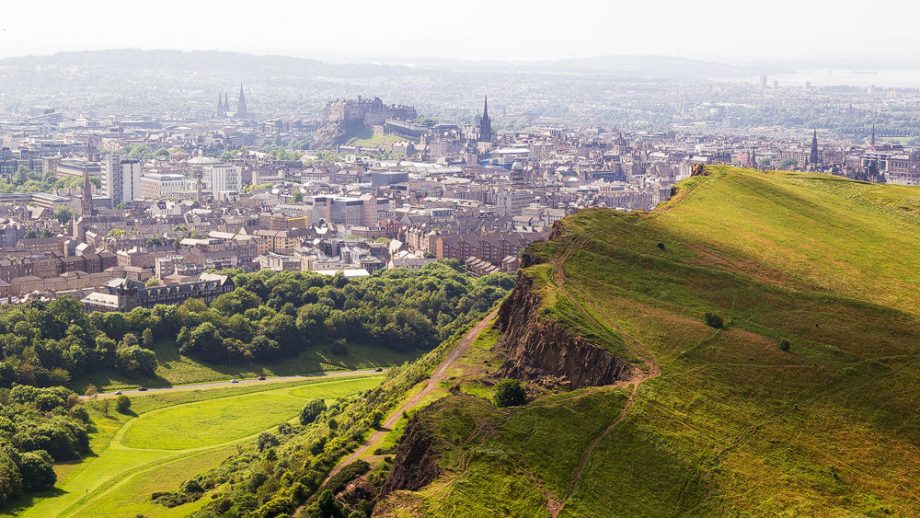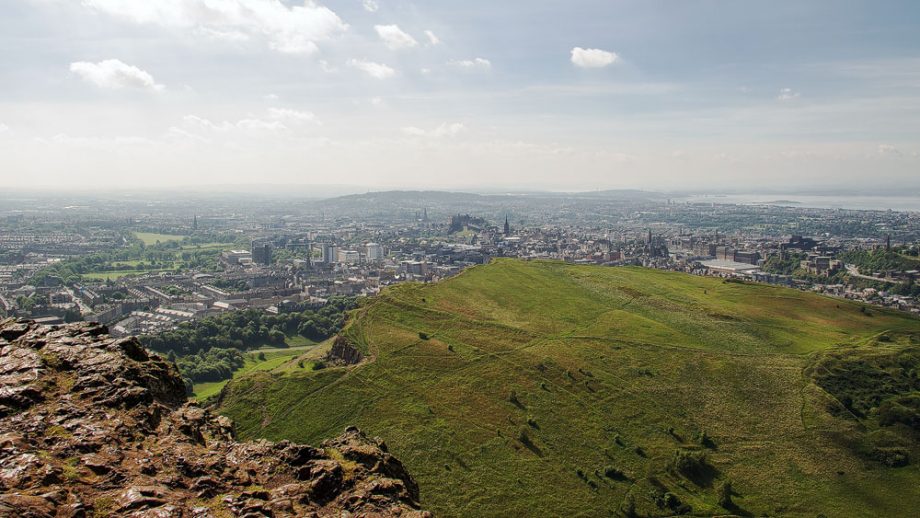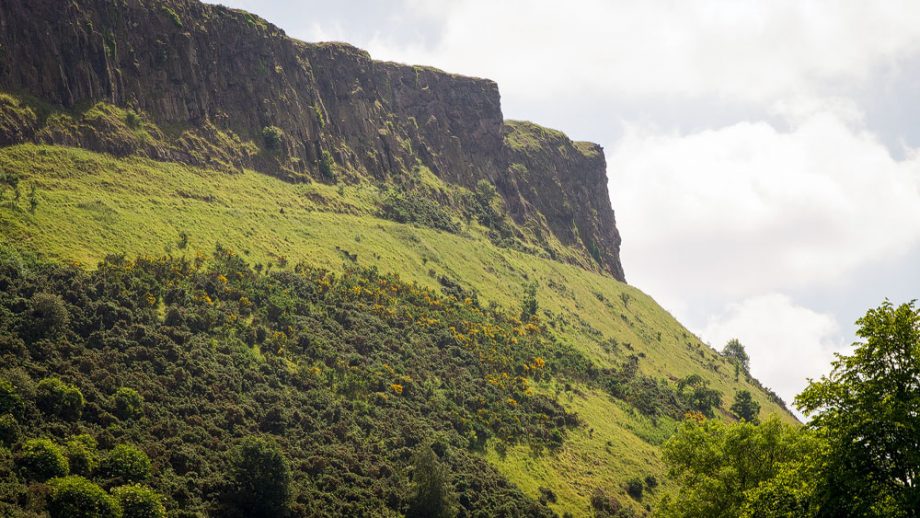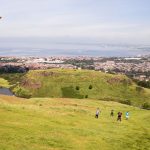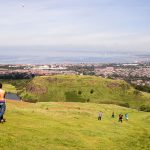Mountaineering in the Scottish capital? You can! Arthur’s Seat is located right in the centre of Edinburgh. And it harbours many a spooky secret.
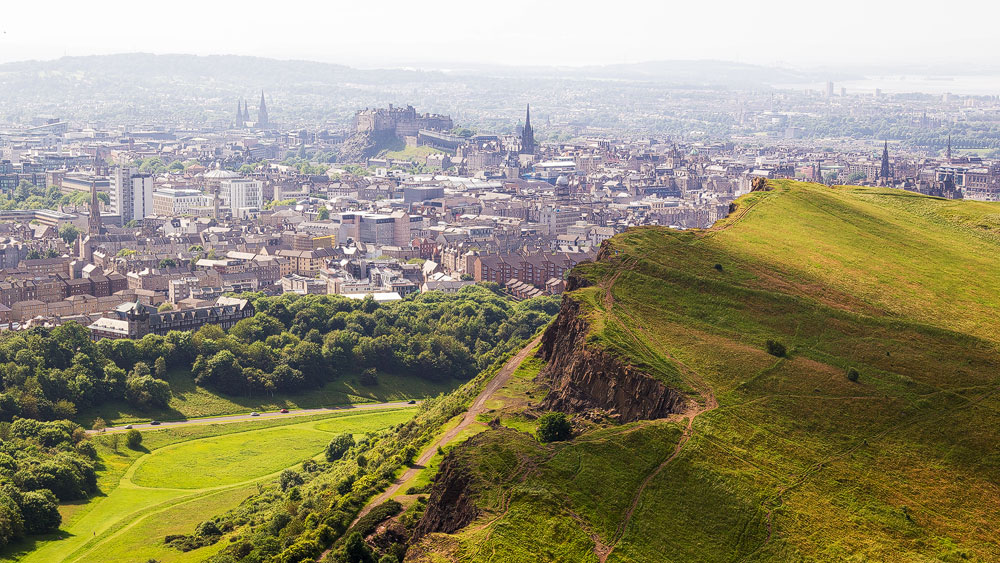
Around two hundred years ago, five boys were playing on Edinburgh’s local mountain when they made a discovery: a small cavity in the side of Arthur’s Seat was carefully sealed with slate slabs. The boys were naturally curious – what could be hiding underneath? So they removed the stone and underneath – stacked in three layers – they found seventeen small wooden coffins. Each one was just big enough to fit a Barbie doll these days.
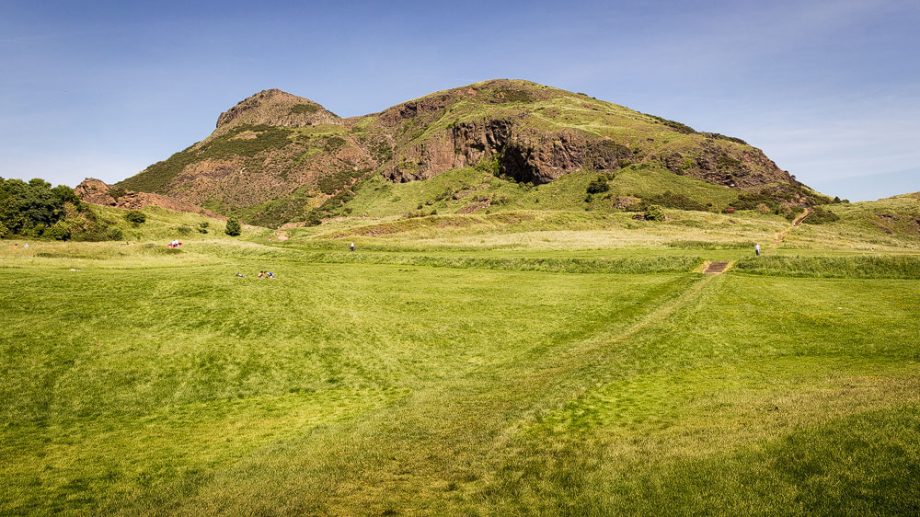
Of course, the children couldn’t keep their macabre find to themselves for long, and so the little coffins ended up with Mr Ferguson, their school teacher. He took a closer look at the wooden boxes in his kitchen: the coffins were each carved from a single piece of wood, but hinges were attached to the sides with some wire. So there must be something hidden inside them.
Ferguson quickly grabbed a kitchen knife, jammed it into the gap and broke open one of the mini coffins. As was to be expected, there was a body inside. But the details were astonishing. They were carved wooden dolls with their own faces. The little corpses actually wore a cotton shroud on their bodies. It was as if a doll cemetery had been discovered in Arthur’s Seat.
Since the coffins were discovered in 1836, historians have of course been racking their brains as to what they might be all about. Most theories assume that a burial had taken place here for people whose real bodies were no longer there – so were the dolls governors? If so, for whom?
The number seventeen soon gave rise to an eerie suspicion: Because the two notorious serial killers Burke and Hare had killed exactly seventeen people in Edinburgh. They had sold their bodies for anatomical studies. The victims were therefore dissected and not given a proper burial. So did someone want to give the killers’ victims a final rest? Perhaps even the killers themselves, plagued by the fear that their victims would otherwise haunt them as ghosts?
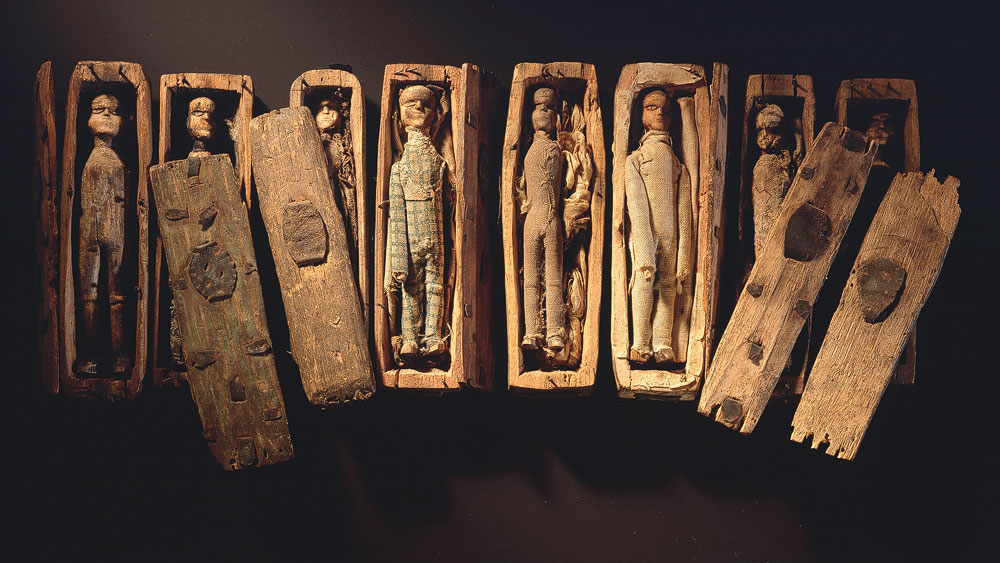
Photo: © National Museums Scotland
The theory is very appealing, but there is a catch: the dolls in the coffins from Arthur’s Seat were all male. But Burke and Hare had also killed women. Some suspect that the burials were perhaps intended for sailors who were lost at sea. However, this cannot be proven at the moment.
However, investigations reveal that the coffins had only been in Arthur’s Seat for a few years. The small shrouds were made from cotton, which only replaced linen in Great Britain from 1800. And the special thread for it was not produced until 1830. That much is known, but in the end, the purpose of the mini funeral remains a mystery.
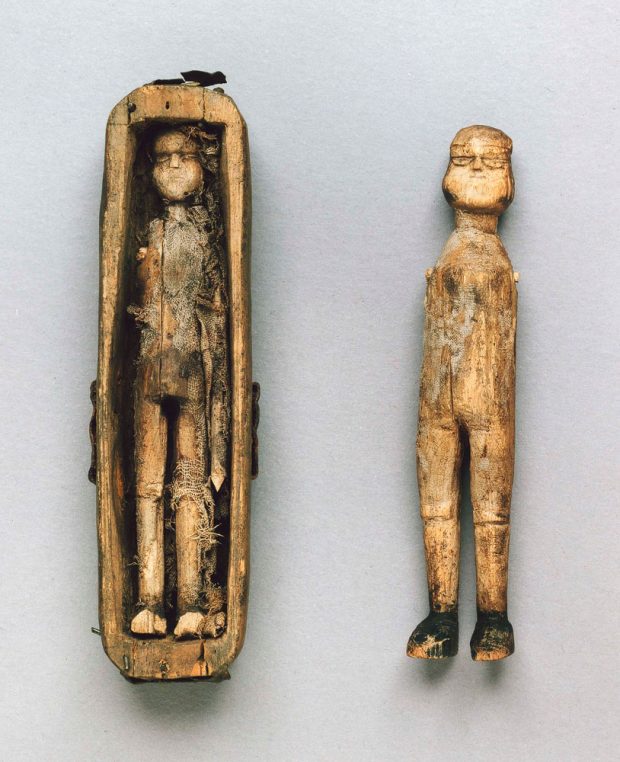
Photo: © National Museums Scotland
The whereabouts of nine of the coffins are just as mysterious, as only eight remain today. But they are not far from where they were found: the National Museums of Scotland are just a few hundred metres from the foot of Arthur’s Seat. As the actual purpose of the coffins could not be clarified, the Scots have once again turned to the realm of myth. They are popularly known as “fairy coffins”.
Knowledge: About Arthur’s Seat
Arthur’s Seat is really close to the centre of Edinburgh near the Old Town, about two and a half kilometres from Edinburgh Castle as the crow flies. The mountain is a remnant of a volcanic system from 350 million years ago, which was later moulded into this shape by glaciers during the Ice Age.
The summit of Arthur’s Seat is 251 metres high, and in principle Arthur’s Seat is just one peak of a whole “massif” that rises in Holyrood Park. Next to it are the Salisbury Crags, steep, jagged stone walls that tower up around a hundred metres and form a table mountain at the top.
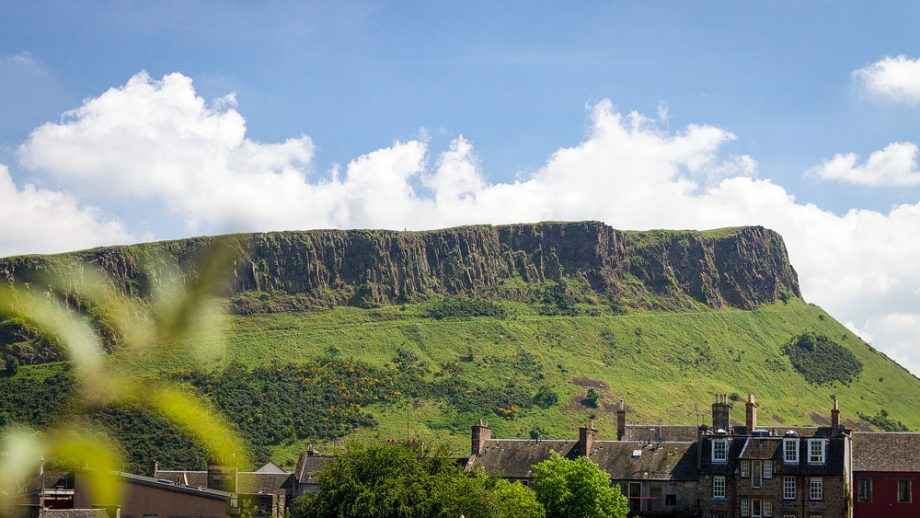
Photo: Martin Goldmann
There is a ring road around Arthur’s Seat and Holyrood Park, along which there are two lochs: St Margeret’s Loch and Dunsapie Loch.
It is not clear where the name “Arthur’s Seat” comes from. In 1912, John Milne published a book on Gaelic place names in which he derives the name from “Suidhe Ard-Thir”, which means “place on high ground”. However, the word order here would be strange. The historian William Maitland put forward another theory as early as the 18th century. According to this, the name “Àrd-na-Said”, “Height of the Arrows”, would be a variant that was later changed to “Archer’s Seat” and later “Arthur’s Seat”.
Tip: The view from Arthur’s Seat is worthwhile
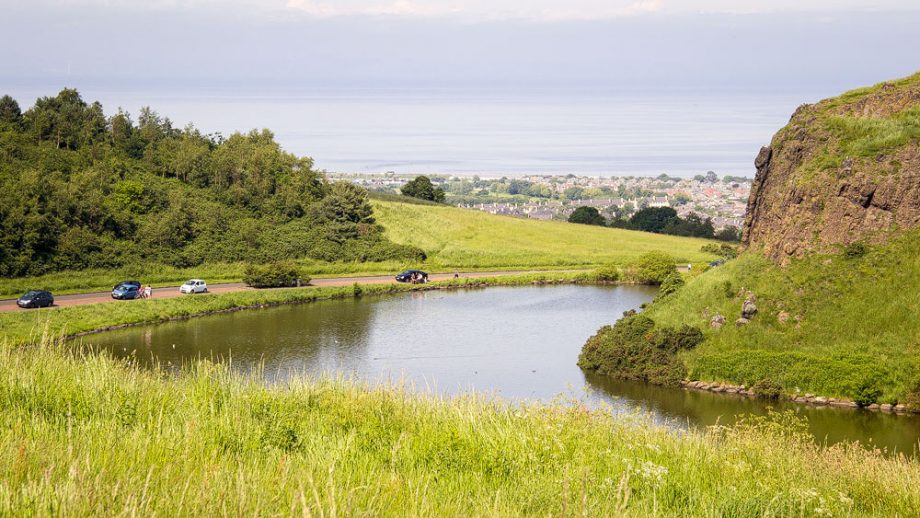
In any case, you can enjoy a view from the mountain if you catch a good and clear day. From the summit you can see the castle and the city centre on one side and the sea on the other.
There are basically two ways up Arthur’s Seat: it is relatively easy from the east side from Dunsapie Loch, as the mountain initially rises gently from there. To the south-west, on the other hand, the direct and steeper path climbs in small hairpin bends. You can also take a longer walk over the Salisbury Crags. The route can be seen here on the map.
But very important: even if a difference in altitude of around 200 metres doesn’t sound like much to our ears, Arthur’s Seat should not be underestimated. Because both variants end below the summit and the last few metres are steep and there are only narrow paths. You should wear good footwear for the climb. You should allow at least an hour – if only to rest a little at the top and enjoy the view.
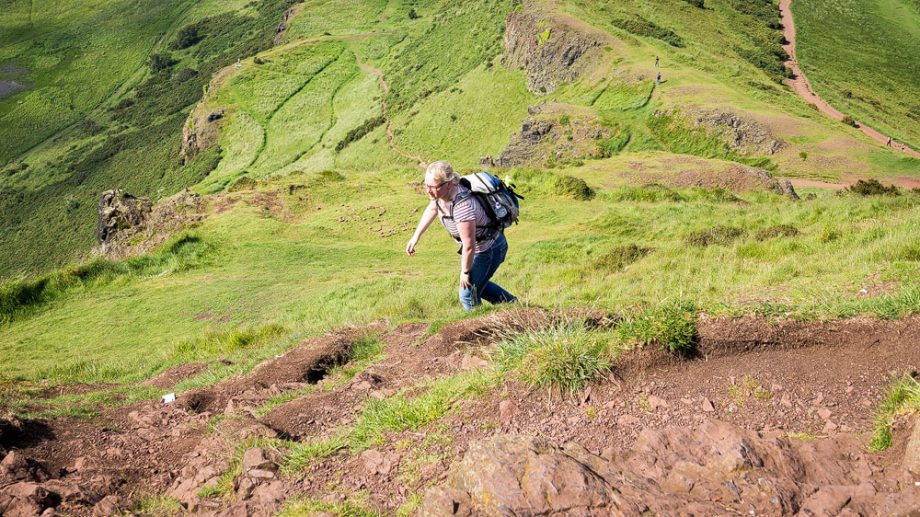
By the way, you shouldn’t just let your gaze wander into the distance during the hike. There are also beautiful flowers to be found around the mountain, such as the foxglove in the photo on the right.
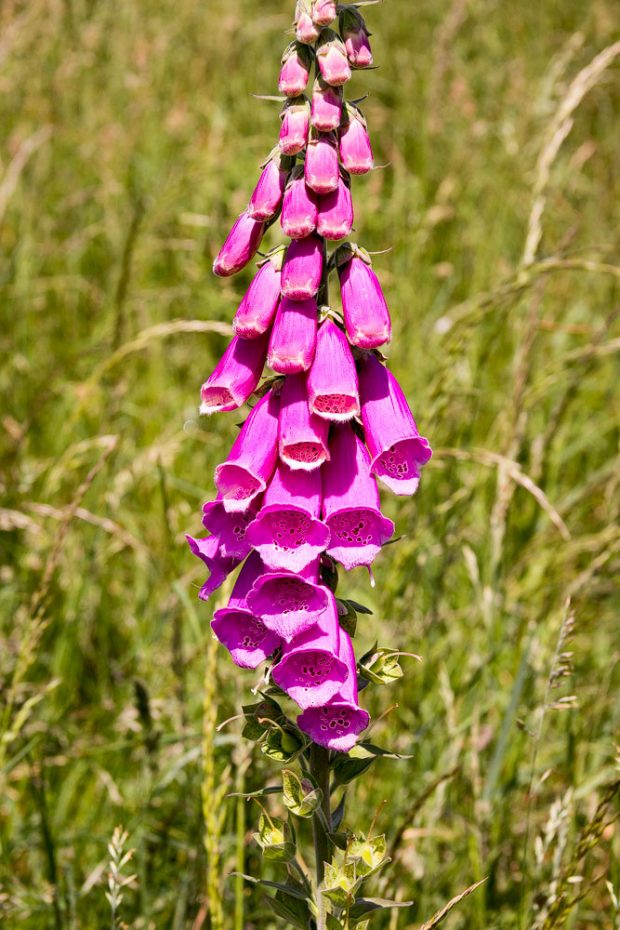
Personal note: On the hottest day on the mountain
Three of us ventured up the mountain. We came from Queensdrive towards the city centre and wanted to take the easy way up, so we first had to walk around Arthur’s Seat to Dunsapie Loch. We then climbed up from there. The area is a long hillside with a meadow, where we encountered many tourists.
Among them was a group of rugby fans, one of whom had a ball with him. He probably wanted to kick it to his mates further down. He made a big mistake and the ball landed somewhere in the middle of nowhere. You can see the reactions of the others in these three pictures:
However, it wasn’t all good news for us on the hike. We had chosen the hottest day of the year for the ascent, which we hadn’t realised beforehand. We therefore didn’t bring any sun hats or sun cream. Although we reached the summit, we were still quite exhausted from the heat. The next day we also had a severe sunburn – a first for me in Scotland.
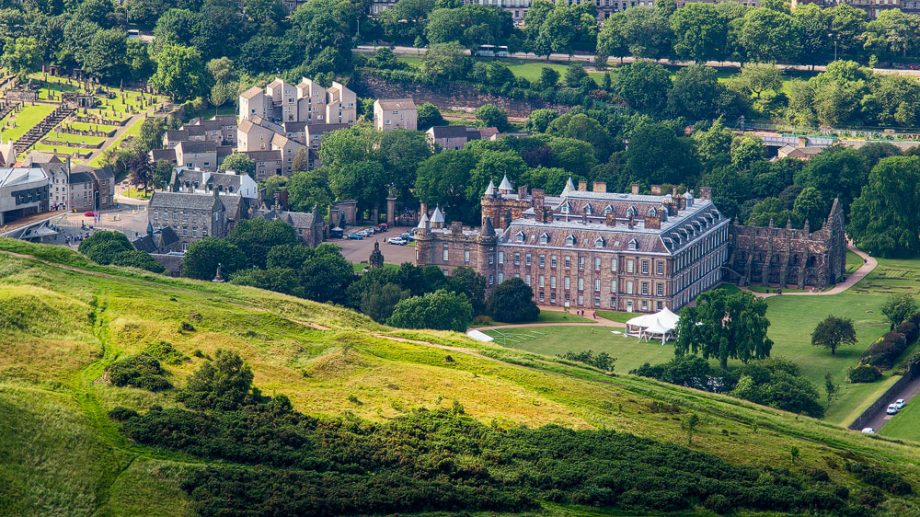
The view is well worth the effort. You can see Holyrood Palace to the north, the castle to the west and the sea in the distance. Magnificent.
How to get there:
By car you can drive to Duke’s Walk or even to Loch Dunsapie and park there.
Alternatively, many buses will take you from the city centre to your destination. For example, the Lothian Bus Service 14 to Greendyke. You can get off at the Commonwealth Pool. Or you can take the buses that start at North Bridge and travel along Clerk Street to East Preston Street. Details can be found on the Lothian Buses website.

